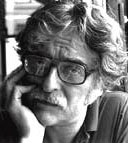 |
→ September 2005 Contents → Column
|
Nuts & Bolts
|
 |
|
The last day of August the Internet version of The New York Times had 83 photographs relating to Hurricane Katrina. They also had six minutes and eight seconds of video. The next day, September 1st, new pictures accompanied the latest news articles and 24 images were added to a "slide show" about Katrina. By the way, on that last day of August, a few hours after the event, there were also 11 photographs of the disastrous collapse of a bridge in Iraq.
At the end of the week, in addition to their regular coverage, the Los Angeles Times had a 76-image slide show of the effects of Hurricane Katrina on their Web site. MSNBC had 105 still images in addition to their video clips; ABC, 65. USA Today had 103 still images in addition to video, time-lapse animation and satellite images. Yahoo News had 655 still images of the aftermath: 23 of crimes, 56 aerials and 135 of rescues.
Photojournalism is very much alive on the Web.
In the case of Katrina, photographers arrived early and at areas where covering the news was dangerous. When most people were trying to leave, photographers were trying to get in. Unless they were idiots, they were well aware of the physical danger and the long-term dangers to their health. And I imagine they were proud and happy to be doing their job.
No more stupid celebrity stories and inconsequential, uninformative photos whose function is to attract attention to the text. Actually covering something important, instead, and knowing that the pictures could convey something that words couldn't. And the ultimate privilege of seeing something firsthand that will change your life.
Important photojournalism is very much alive on the Web.
And I can't think of any other reason to be a photojournalist than to do important photojournalism. If you are a news photographer in order to support the spouse and kids, then you are an idiot. You are capable of a lot of other jobs that will do a better job of supporting the spouse and kids with the same or less, but absolutely no more effort.
But to receive an education that isn't taught in schools ...
I went to a fancy Ivy League college and was offered scholarships from schools with advanced degrees.
A lot of people thought I was nuts when I chose instead to become a news photographer. But what an education that job gave me. Best advanced degree I could have gotten.
The photographers covering Katrina are going to see the randomness of the good and evil executed by nature, fate, man and God. They are going to see some good people and some bad people - situations so extreme that the goodness and the badness will actually be visible to the photographer and the camera. Their photographs will pass that on to others. But the photographers themselves will be the greatest beneficiaries of their work. They are going to get an education that will change them forever.
© Bill Pierce
Contributing Writer
|
|
Back to September 2005 Contents
|
|